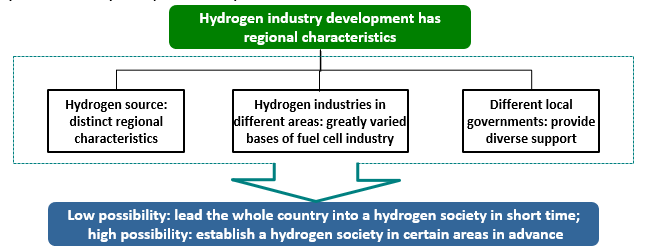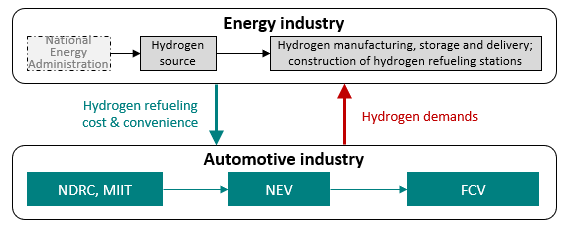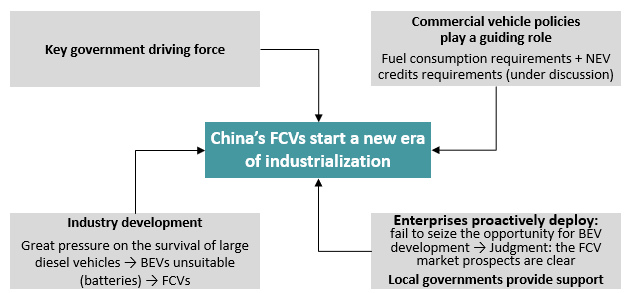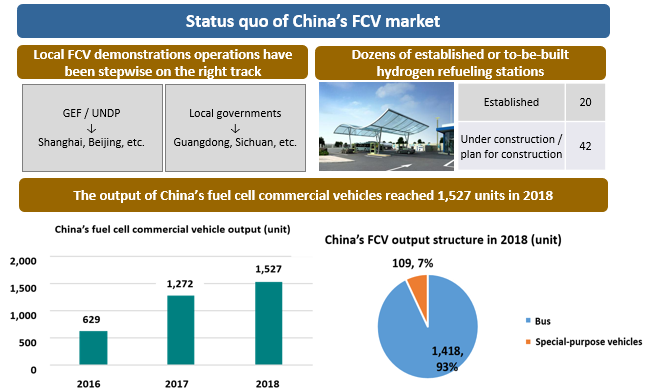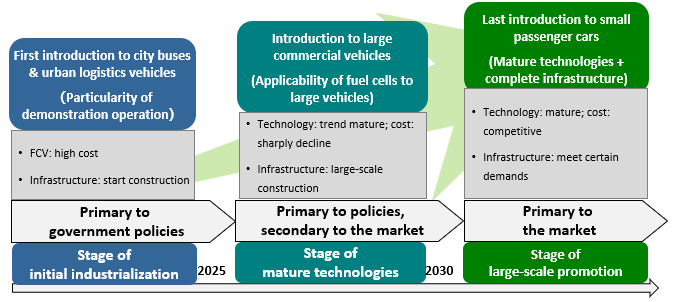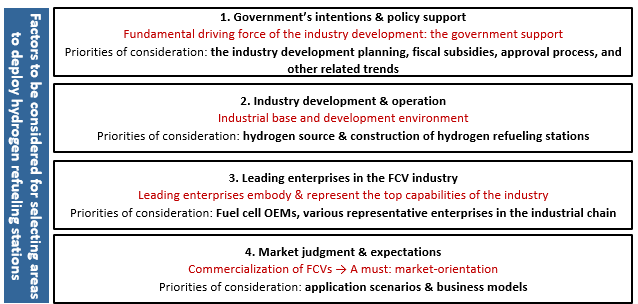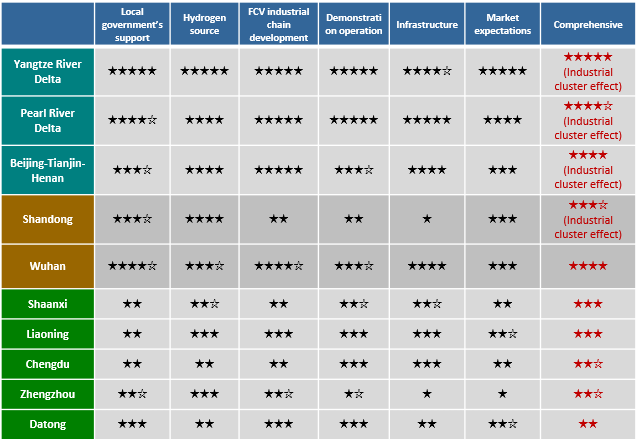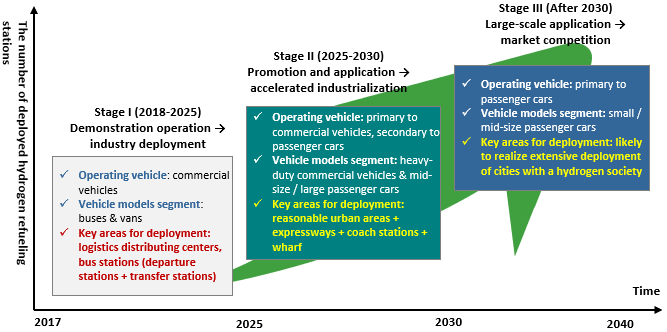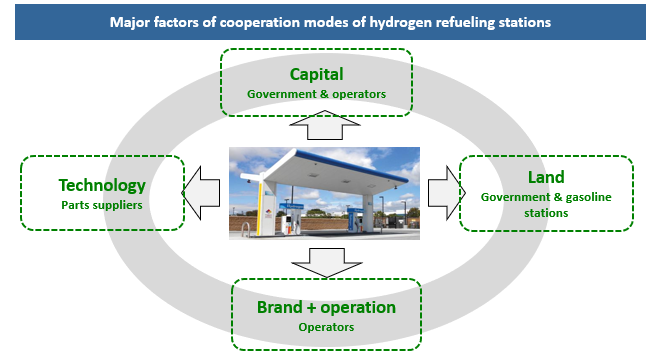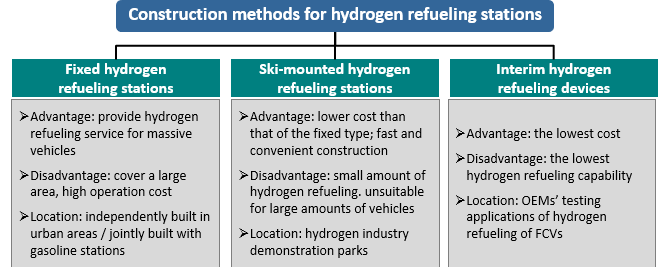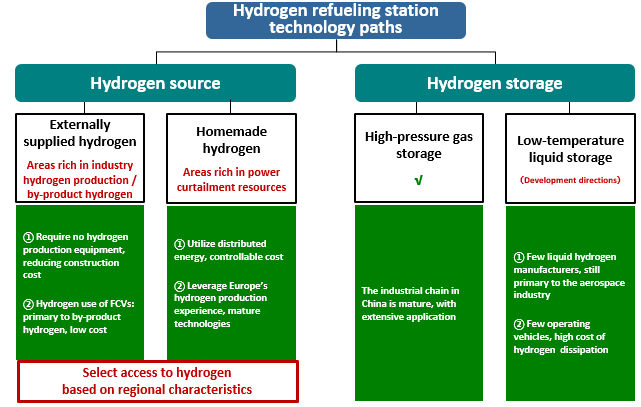| China's Hydrogen Fuel Cell Vehicle Industry Development Strategies |
[Research institution] Tsinghua Automotive Strategy Research Institute (TASRI) [Sponsor] Shell Hydrogen [Key words] hydrogen, fuel cells, hydrogen refueling stations, regional advantages [Abstract] 1. Hydrogen, as efficient and versatile energy, shows remarkable advantages in the application scenarios in China¡¯s energy market. Hydrogen economy development has gradually become the social focus of China 2. The development of China¡¯s hydrogen industry is supported by policies and the market, and areas with favorable factors are expected to build a regional hydrogen society in the first instance 3. It is suggested that hydrogen should be incorporated into fuel for transport instead of hazardous chemical substances. It is necessary for China to further define the national regulatory departments for the hydrogen mobility industry 4. The national standards and regulations for the hydrogen industry should be developed in harmony with the prevailing global standards with the aim to unleash China's potential for hydrogen in transport; FCV serves as a major scenario for the application of hydrogen; the construction of hydrogen refueling stations is an essential requirement for FCV development 5. Construction of hydrogen refueling stations requires thoughtful deployment in coordination with the industry development
Hydrogen and FCV Industry Development: Strong CoordinationChina¡¯s NEV industry development is still driven by policies at present. Guided by the national industry policies, NEVs will occupy greater market presence, and the industry will be finally driven by the market. Battery electric vehicles (BEVs) and fuel cell vehicles (FCVs) have their own advantages. Whilst there exist substantial differences in the development strategies for BEVs and FCVs, they are mutually complementary.
Since China has a vast territory, plus differences in local economic, policy and energy environments, China¡¯s hydrogen energy industry development features regional characteristics. It is therefore difficult to lead the whole country into a hydrogen society. However, those areas with favorable factors such as advantageous hydrogen sources, clear infrastructure planning and strong policy support, are more likely to create a hydrogen society.
Hydrogen fuel cell vehicles (FCVs) will become one of the main drivers of hydrogen applications and the hydrogen industry development in the future. Thanks to high efficiency, cleanliness, long electric range, fast refueling, strong adaptability and other characteristics, FCVs, as a rising star in NEV segment, have gained widespread attention in the market, which will also accelerate the commercialization of FCVs. There is a synergy between the hydrogen energy industry and FCV development. Hydrogen refueling stations serve as the key link between the two. Therefore, the construction and operation of hydrogen refueling stations are particularly important. In terms of selecting the location for hydrogen refueling stations, it is advised to make a comprehensive analysis of the regional characteristics, such as the hydrogen source, market demands and local government¡¯s support. Development and application of FCVs depend on the development of a hydrogen society. Otherwise, FCVs will be like ¡°a tree without the root¡±. FCV development will generate hydrogen demand, which will potentially accelerate hydrogen industry development. However, it is necessary for China to further define the national regulatory department for the hydrogen industry, with the aim to harmonize with prevailing global standards. These regulations should facilitate the use of hydrogen, which should be incorporated into energy and fuel use instead of hazardous chemical substances.
Promoted by the government departments + enterprises¡¯ enthusiasm in investment ¡ú Hot topics of FCVs rise againChina¡¯s FCV development drivers are various: 1. The State Council and the National Development and Reform Commission (NDRC) have jointly formulated the top-level design of the FCV industry; the Ministry of Science and Technology (MOST) promotes R&D of technologies; the Ministry of Industry and Information Technology (MIIT) follows up to implement the industrialization development; 2. CAFC & NEV dual credits requirements for passenger cars, plus with the upcoming dual credits requirements for commercial vehicles will accelerate the development of the NEV industry; 3. FCVs are more applicable to heavy-duty commercial vehicles than BEVs; 4. Local governments and enterprises make active response to deploy the FCV industry. It is expected that China¡¯s FCV industry will usher in a turning point for fast development by 2025.
China Will Start From Fuel Cell Commercial Vehicles With Broad Market ProspectsChina¡¯s FCVs are supported by the market and policies. With the government playing a leading role, China¡¯s FCVs are expected to make breakthrough in the commercial vehicle sector. The number of commercial vehicles in China in 2018 reached 1,527 units.
China¡¯s FCV market: Transform from a leading role of policies to sustainable market around 2030Since incomplete infrastructure, high cost and key technologies will hinder market-oriented promotion at the early stage of the FCV industry, the industry development depends on policies. With the improvement of industrial chain and infrastructure concurrently to that, fuel cell passenger cars will gradually be introduced into the market, driving the FCV industry into the stage of sustainable commercial development.
Areas for Deploying Hydrogen Refueling Stations in ChinaEstablishing a hydrogen society in certain areas in China requires such factors as: 1. Local government¡¯s supporting policies; 2. Available hydrogen resource; 3. Local industrial base; 4. Drive from leading enterprises; 5. Good economic environment; 6. Market demand. All these factors should be fully considered when selecting areas for hydrogen refueling stations.
Taking the various factors concerning the establishment of a hydrogen society in certain areas into comprehensive analysis, it is highly possible for Yangtze River Delta, Pearl River Delta and Beijing-Zhangjiakou to enter a hydrogen society first, allowing in-advance deployment of hydrogen refueling stations.
Key to Operation of Hydrogen Refueling Stations: Regional DeploymentSelection of functional areas for the construction and operation of hydrogen refueling stations at key locations is not only directly related to the operational requirement but also critical. According to the characteristics of the regional FCV applications, it is advised to select different areas for deployment at varied stages of development. At the early stage, it is proposed to focus on logistics distribution centers and bus stations. At the medium stage, we will focus on high-speed areas, long-distance bus stations, and terminal layouts. At the later stage, cities with a hydrogen society may be widely deployed.
Operation of hydrogen refueling stations directly embodies the implementation of business and realization of business goals. Cooperation is essential: make full use of resources to address such issues facing hydrogen refueling stations as land, capital, technology, operation, regulation, subsidy and so on.
Construction of Hydrogen Refueling Stations in China: Initially Skid-Mounted Type, Supported by Permanent SitesThe types of hydrogen refueling stations: 1. Fixed hydrogen refueling stations; 2. Skid-mounted hydrogen refueling stations; 3. Interim hydrogen refueling devices. Hydrogen refueling station technology paths should combine with different application scenarios, ultimately resulting in a permanent hydrogen infrastructure.
Construction of hydrogen refueling stations in China: initially skid-mounted hydrogen refueling stations, supported by externally supplied hydrogen (high-pressure gas storage). It is advised to make appropriate deployment of fixed hydrogen refueling stations in the areas with advanced technologies for hydrogen production from renewable resources, for example: Zhangjiakou rich in windpower resource.
High-pressure gas storage of hydrogen is currently the major way for commercial application. Liquid hydrogen refueling stations can facilitate fast promotion of hydrogen infrastructure, and in future, liquid hydrogen can become the best cost-effective technology path for hydrogen storage.
Summary of China¡¯s FCV Industry Development Strategies1. Promoted by government policies and industry development: FCVs are expected to embrace a turning point for development by 2025, and start to enter the stage of commercialization around 2030 2. China¡¯s FCVs should start from commercial vehicles, and will finally enter the passenger car segment 3. China¡¯s goal of a developing hydrogen society: start from certain geographical areas 4. There is development required for China¡¯s hydrogen standards systems. Enterprises should proactively participate in the development of the standards system and focus on hydrogen storage, delivery, safety and test standards 5. Hydrogen storage methods of hydrogen refueling stations: high-pressure gas storage ¡ú cryogenic liquid storage 6. It is advised to select different models for construction of hydrogen refueling stations based on the characteristics of the area for hydrogen production, storage and delivery. Initially skid-mounted hydrogen refueling stations and supported by fixed hydrogen refueling stations 7. Give priorities to the selection of locations for construction of hydrogen refueling stations: short-term focus ¡ú places for centralized hydrogen refueling of operators (logistics transfer centers + bus routes); mid-term focus ¡ú the deployment of operation routes (expressways, coach stations); long-term focus ¡ú realize widespread distribution of cities with a hydrogen society |
| PREVIOUS£ºGHG Emissions from the Production of Lithium-Ion Batteries for Electric Vehicles in China NEXT£ºElectric vehicle recycling in China: Economic and environmental benefits |



